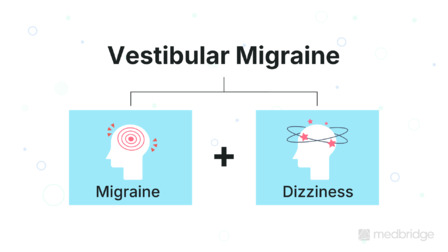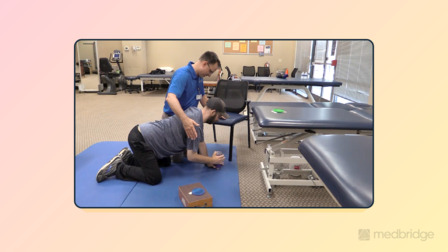Anatomy and Physiology of the Central Vestibular System
Presented by Laura Morris and Jeffrey Hoder
12-Month Subscription
Unlimited access to:
- Thousands of CE Courses
- Patient Education
- Home Exercise Program
- And more
This course offers a detailed exploration of the anatomy and physiology of the central vestibular system, emphasizing its role in integrating sensory information to maintain balance, gaze stability, and postural control. Participants will examine the structures and pathways of the central vestibular system, including the vestibulo-ocular, vestibulospinal, and vestibulo-autonomic reflexes, and their functional connections to the cerebellum and cortex. Designed for occupational and physical therapists, this course provides foundational knowledge to enhance clinical assessment and intervention strategies for individuals experiencing central vestibular dysfunction.
Learning Objectives
- Differentiate between central and peripheral vestibular systems in terms of structure and function
- Identify key structures within the central vestibular system relevant to clinical assessment
- Outline the components of the vestibulo-ocular reflex and vestibulospinal reflex pathways
- Analyze how the functions of the central vestibular system impact balance and gaze stability in daily occupations
Meet your instructors

Laura Morris
Laura Morris is a physical therapist and lecturer with more than 30 years of experience in the management of adults with neurologic disorders. Her clinical work focuses on vestibular disorders and mild traumatic brain injury at Elmhurst Hospital, part of Edward-Elmhurst Health in the Chicago area. She teaches continuing…

Jeffrey Hoder
Dr. Hoder’s specific area of expertise is in adult neurological rehabilitation related to the examination and management of adults with neurological deficits. As a clinician and educator, his philosophy is to train compassionate and critical physical therapy clinical scientists to evaluate and manage individuals with complex…
Chapters & learning objectives

1. Vestibulo-Ocular and Vestibulospinal Pathways
This chapter introduces the central vestibular system by defining its key structures, including the vestibular nuclei, cerebellum, and cortical pathways. Participants will explore how sensory inputs from the vestibular, visual, and somatosensory systems converge to support balance, postural control, and gaze stabilization. Understanding these pathways is essential for identifying dysfunctions that affect motor control and functional mobility.

2. Cortical Pathways
This chapter focuses on the cortical contributions to the central vestibular system, highlighting their roles in spatial navigation, cognitive integration, and emotional regulation. Participants will delve into the connections between the thalamus, cortical vestibular areas, and autonomic systems to understand how central vestibular processing affects both physical and cognitive function. Insights gained will help clinicians address complex vestibular disorders.

3. Cerebellar Pathways
This chapter examines the cerebellum’s critical involvement in the central vestibular system, focusing on its role in modulating reflexive and voluntary movements. Participants will study how the cerebellum interacts with vestibular pathways to ensure gaze stability, dynamic balance, and coordinated movement. This understanding is vital for developing targeted interventions to improve patient outcomes in cases of cerebellar or central vestibular dysfunction.


